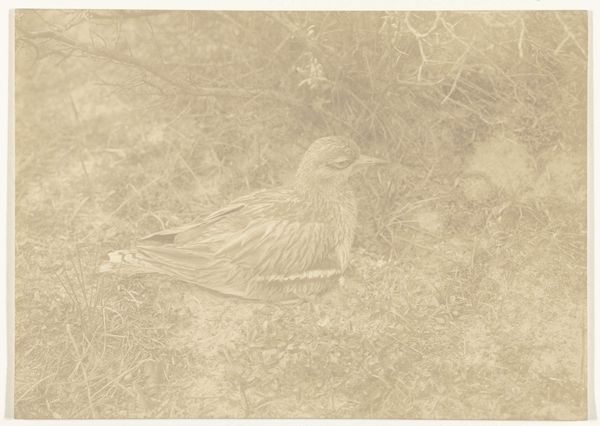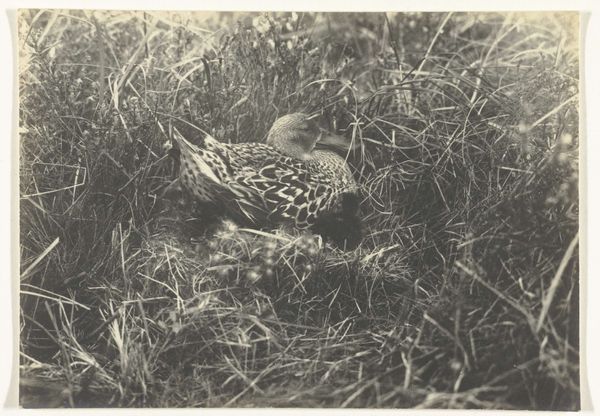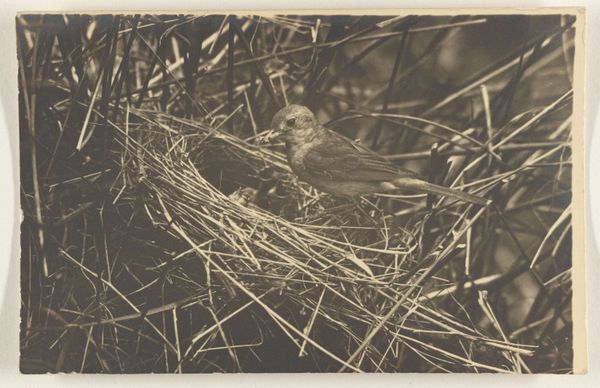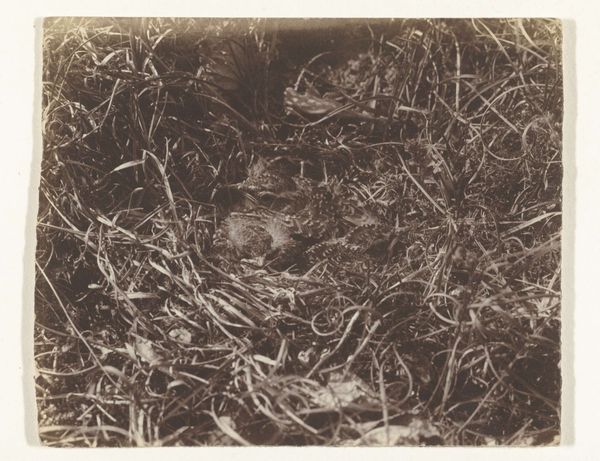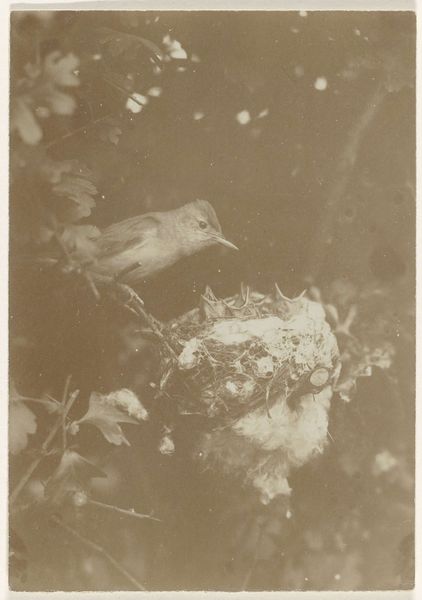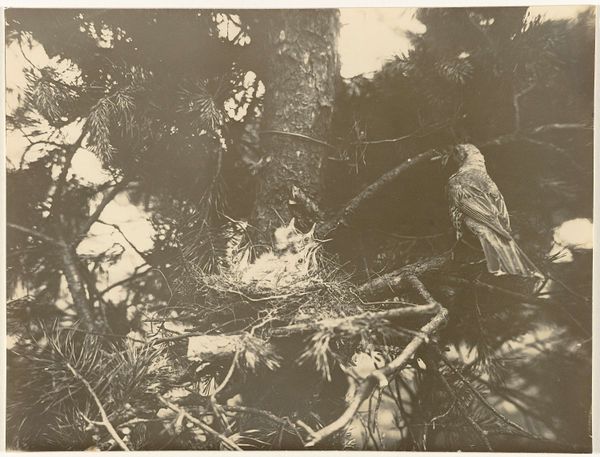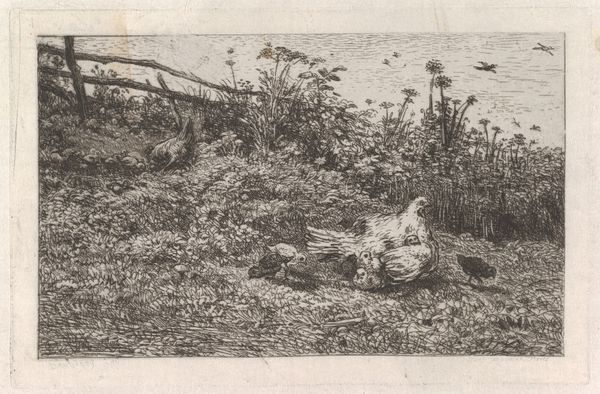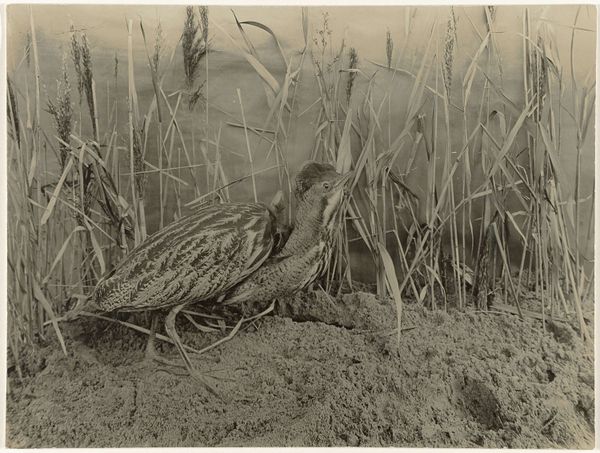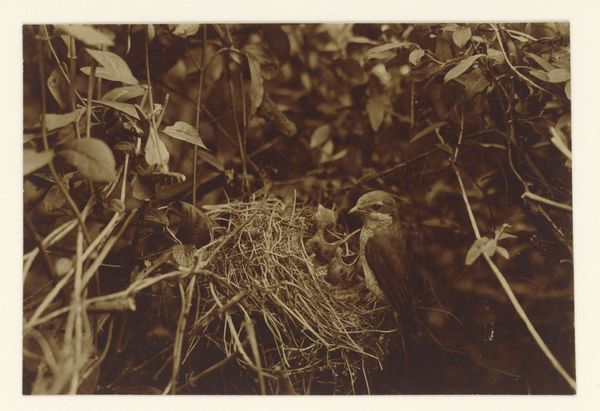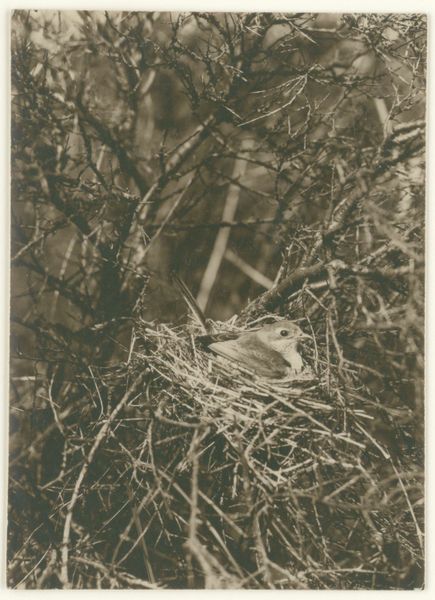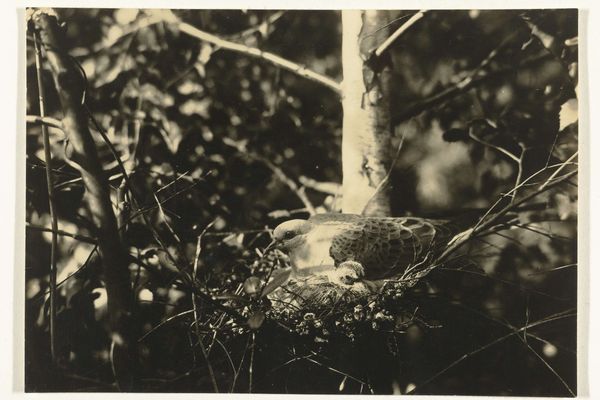
photography, gelatin-silver-print
#
still-life
#
landscape
#
photography
#
gelatin-silver-print
#
realism
Dimensions: height 168 mm, width 226 mm
Copyright: Rijks Museum: Open Domain
Editor: Here we have Richard Tepe’s “Broedende Griel in de duinen,” a gelatin silver print created sometime between 1900 and 1930. It’s such a quiet image. What stands out to me is the bird’s stillness, how it seems completely at one with the landscape. What do you see in this piece? Curator: The image vibrates with a profound sense of place and time. The nesting bird, so vulnerable yet determined, resonates deeply. Consider the enduring symbol of the nest, across cultures and centuries, it signifies home, safety, and the promise of new life. It evokes maternal instinct, but what is being protected? Editor: Well, eggs I suppose, and then eventually the chicks, right? Curator: Indeed, but perhaps it represents something larger as well. Notice how the muted tones and textures of the gelatin silver print amplify the connection between the bird and its surroundings. The bird practically *is* the dune; its safety *is* the survival of the surrounding nature and its future chicks. Its survival depends on an ecosystem and shared sense of space. What memories, or cultural associations does this image spark within you? Editor: It’s funny, I mostly think of that saying about not disturbing a bird on its nest. Sort of that feeling of intrusion. Curator: Precisely! And isn't that a powerful statement in itself? It highlights the respect and protection that such potent symbols of growth deserve, and have come to mean in collective cultural consciousness. Editor: I hadn't considered how much symbolism could be tied into one photograph! Curator: Art often invites us to explore these layered meanings and consider our place within the broader narrative. It holds both a personal, emotional association but also the collective visual consciousness that shapes its role in culture.
Comments
No comments
Be the first to comment and join the conversation on the ultimate creative platform.
